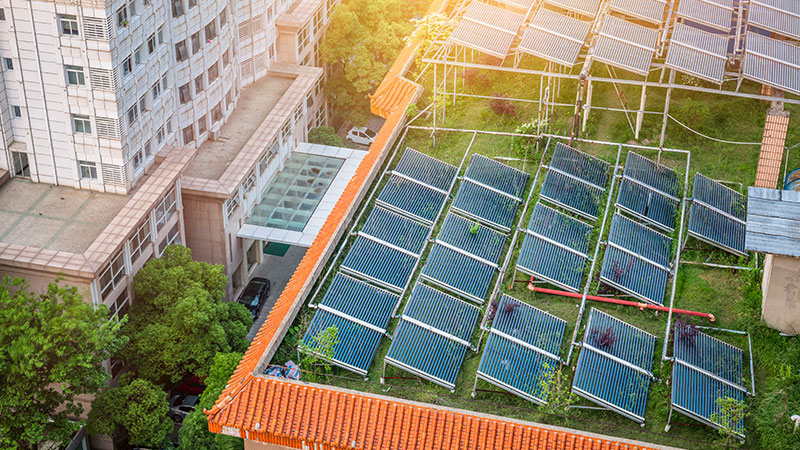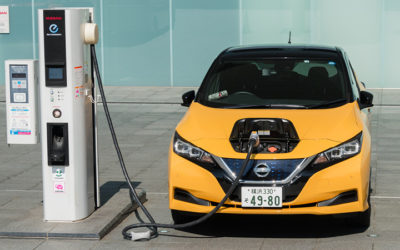

Solar cooling
According to the International Energy Agency’s (IEA) Future of Cooling report, global cooling-related CO2 emissions total 1.1 GtCO2 or 12% of energy-related emissions from buildings. Under a baseline scenario, the IEA expects CO2 emissions from cooling to almost double by 2050. In response, it is necessary to decarbonize electricity use in air conditioning and roll out alternative low-carbon cooling systems that fulfil rising demand and minimize emissions. The abundance of solar energy alongside demand for space cooling in hot regions makes solar cooling a viable technology to provide low-carbon cooling.
Solar cooling comprises two different systems:
- Solar electric cooling consisting of solar PV panels and electric cooling
- Solar thermal cooling comprising solar thermal collectors and a thermal absorption chiller.
What are the benefits?
Solar cooling has high indirect emissions mitigation potential as it’s not powered by electricity produced in fossil fuel plants. It also prevents direct greenhouse gas (GHG) emissions using solar thermal cooling or natural refrigerants. The exact volume of GHG emissions avoided depends on the efficiency and type of existing cooling system, as well as the local electricity grid’s CO2 emissions factor. Solar cooling also provides other benefits, such as improving energy security by reducing peak loads on the electricity grid.
What are the barriers?
Despite the availability of well-proven technologies, solar cooling systems remain a niche market. The high up-front investment costs compared to conventional cooling systems create the biggest barrier to uptake. In addition, there is limited awareness of this solution and a lack of experience in installing solar thermal cooling systems. Also, insufficient space to install solar PV panels or solar thermal collectors may also constrain the deployment of this cooling technology.
What do we need to scale up?
- Collaboration between the different parties that typically produce and install the two key components of solar cooling systems — solar PV panels or solar thermal collectors and the cooling system – to produce turnkey solutions that facilitate procurement and installation processes and guarantee high quality.
- Local electricity prices that include the costs of externalities and do not include fossil fuel subsidies, since this reduces the payback time for solar cooling systems.
We thank Guidehouse for their contributions to the development of this business case.
More business cases
Battery electric vehicles
Light duty vehicles (LDVs) such as passenger cars and vans are responsible for 51% of CO2 emissions from the transport sector (4.8 GtCO2 on a well-to-wheel, or WTW, basis). WTW emissions include emissions in fuel production and transportation, as well as fuel...
Biofuels in shipping
According to the International Council on Clean Transportation, the shipping sector accounted for 3% (932 MtCO2) of emissions in 2015. The International Energy Agency’s Reference Technology Scenario (a scenario that would result in a 2.7°C temperature increase by...
Building energy management systems
Direct and indirect CO2 emissions from buildings account for 28% of energy-related CO2 emissions, according to Towards a zero-emission, efficient, and resilient buildings and construction sector Global Status Report 2017 by UN Environment and the International Energy...

Copyright © 2025
World Business Council for Sustainable Development
All rights reserved | Privacy Policy



